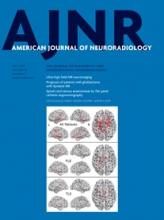Abstract
BACKGROUND AND PURPOSE: CT is the imaging technique of choice in the evaluation of midface trauma or inflammatory disease. We performed a systematic evaluation of scan protocols to optimize image quality and radiation exposure on third-generation dual-source CT.
MATERIALS AND METHODS: CT protocols with different tube voltage (70–150 kV), current (25–300 reference mAs), prefiltration, pitch value, and rotation time were systematically evaluated. All images were reconstructed with iterative reconstruction (Advanced Modeled Iterative Reconstruction, level 2). To individually compare results with otherwise identical factors, we obtained all scans on a frozen human head. Conebeam CT was performed for image quality and dose comparison with multidetector row CT. Delineation of important anatomic structures and incidental pathologic conditions in the cadaver head was evaluated.
RESULTS: One hundred kilovolts with tin prefiltration demonstrated the best compromise between dose and image quality. The most dose-effective combination for trauma imaging was Sn100 kV/250 mAs (volume CT dose index, 2.02 mGy), and for preoperative sinus surgery planning, Sn100 kV/150 mAs (volume CT dose index, 1.22 mGy). “Sn” indicates an additional prefiltration of the x-ray beam with a tin filter to constrict the energy spectrum. Exclusion of sinonasal disease was possible with even a lower dose by using Sn100 kV/25 mAs (volume CT dose index, 0.2 mGy).
CONCLUSIONS: High image quality at very low dose levels can be achieved by using a Sn100-kV protocol with iterative reconstruction. The effective dose is comparable with that of conventional radiography, and the high image quality at even lower radiation exposure favors multidetector row CT over conebeam CT.
ABBREVIATIONS:
- CBCT
- conebeam CT
- CTDIvol
- volume CT dose index
- HPM
- high-pitch mode
- MDCT
- multidetector row CT
- Sn
- an additional prefiltration of the x-ray beam with a tin filter to constrict the energy spectrum
- © 2015 by American Journal of Neuroradiology












